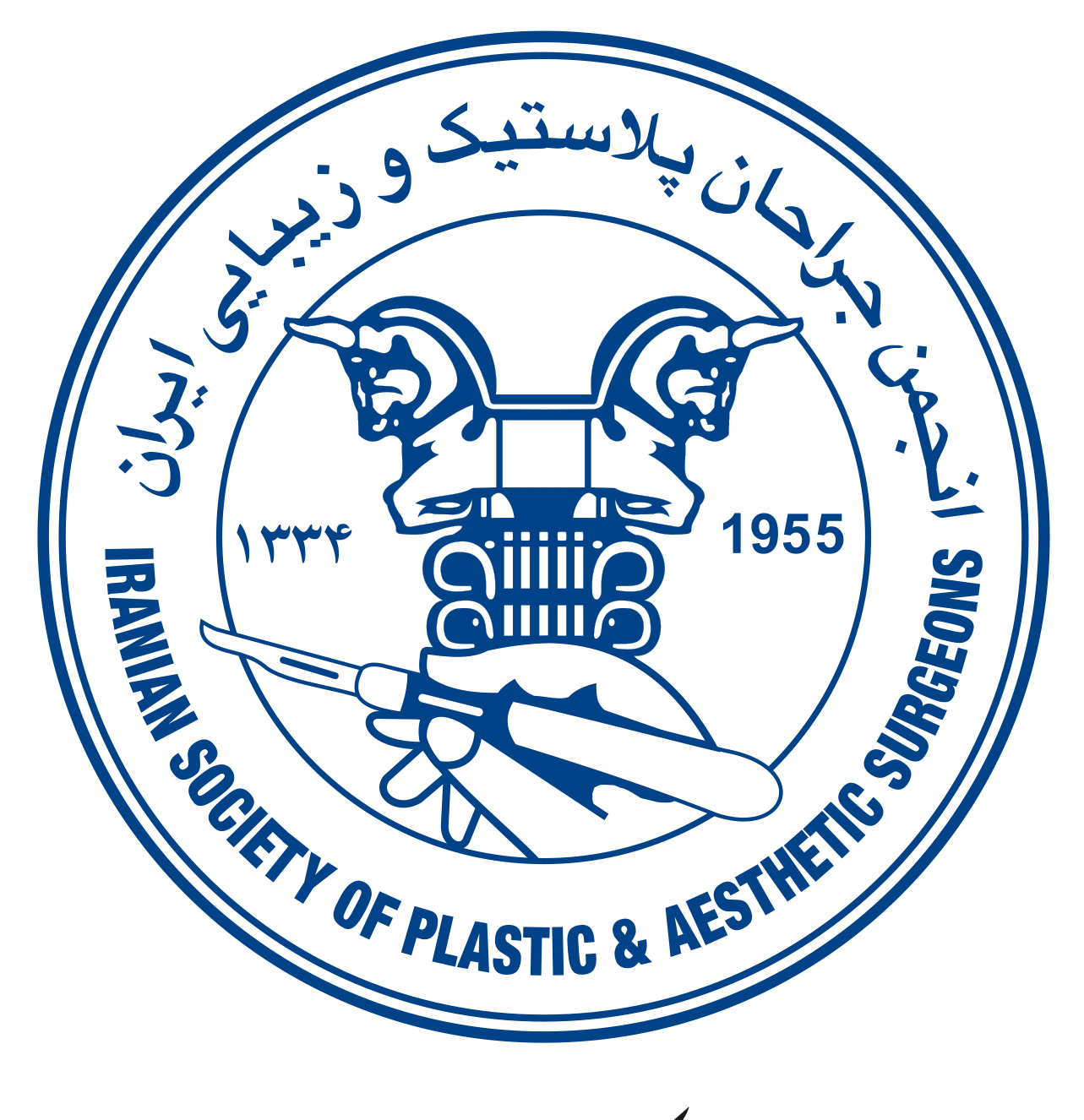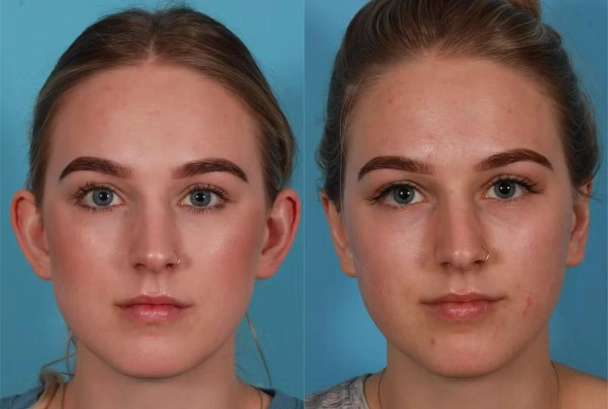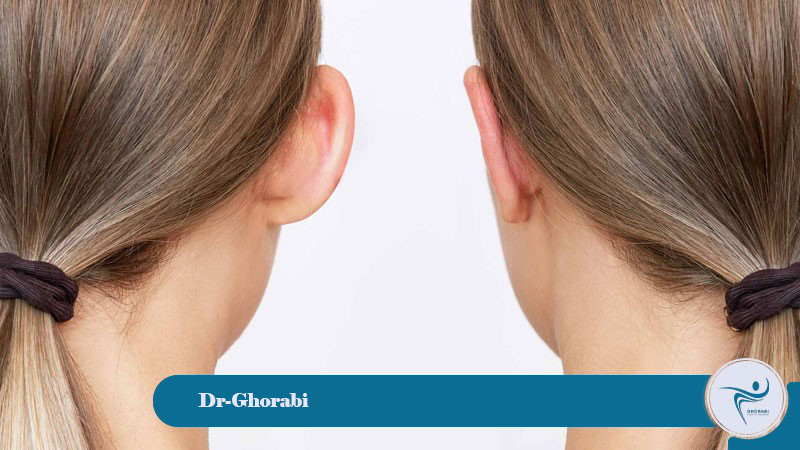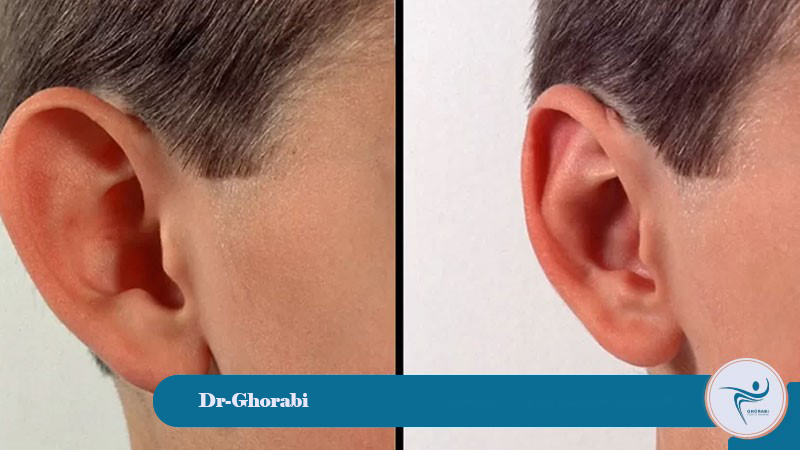Otoplasty, also known as cosmetic ear surgery, is a surgical procedure to improve the shape, position, or proportion of the ears. This surgery corrects congenital ear defects, changes the size of the ears, or adjusts prominent ears.
Various types of otoplasty include reducing ear size, setting back prominent ears, and correcting abnormal ear shape. The surgical process involves making an incision, reshaping the cartilage, and suturing. Individuals dissatisfied with the appearance of their ears and in good general health are considered suitable candidates for otoplasty. The best age for otoplasty is generally after 5 or 6 years of age.
Types of ear surgery
Ear otoplasty surgery includes two main types: ear reduction otoplasty for reducing the outer ear and prominent ear correction otoplasty for bringing the ears closer to the head. Below, we will examine these types of ear surgery in more detail.
Suitable Candidate for Otoplasty
Otoplasty surgery is performed to correct congenital ear defects, prominent ears, or to establish ear symmetry. Selecting the appropriate candidate for otoplasty is crucial for successful and satisfactory surgical outcomes. Below, we scientifically examine suitable otoplasty candidates and the best candidacies, along with their potential issues:
- Children over five years old with developed ear cartilage
- Adults dissatisfied with ear prominence and body image
- Individuals with congenital ear deformities
- Patients with damaged ears resulting from trauma or previous surgery
A thorough consultation with Dr. Ghorabi, a plastic surgeon, and an in-depth evaluation of the patient’s medical history are essential for selecting the most appropriate candidate and achieving successful otoplasty results.
considerations for otoplasty candidacy
Otoplasty, or facial surgery of the ear area, comes with some considerations. Risks such as infection, bleeding, and scarring, although rare, are present. Disruption of the symmetry of the ears or overcorrection, sensory changes to the ear skin, and anesthesia complications may also occur.
Stitch protrusion and allergic reactions are also common problems. Unrealistic expectations and poor communication with the surgeon can lead to dissatisfaction. The ideal candidate should be healthy, have realistic expectations, and understand the limitations of the surgery. A thorough consultation with a plastic surgeon is essential for a successful selection.
How is ear otoplasty performed?
Otoplasty (cosmetic ear surgery) for prominent ears is often performed for individuals who are dissatisfied with the excessive protrusion of their ears. The steps of otoplasty for prominent ears are as follows:
- Anesthetizing the patient using local or general anesthesia, depending on the conditions and the surgeon’s preference: The type of anesthesia is determined based on the patient’s age, the complexity of the procedure, and general health.
- Making small incisions behind the ear or within the natural folds to access the cartilage: The incisions are designed to be as inconspicuous and hidden as possible.
- Shaping and repositioning the ear cartilage using various surgical techniques:The cartilage is carefully sculpted, folded, or cut to achieve the desired shape.
- Removing excess skin if necessary to reduce protrusion and create a more symmetrical appearance: Sometimes, removing excess skin is necessary to achieve better aesthetic results.
- Closing the incisions with fine sutures and applying a pressure dressing to protect the ear: Sutures are carefully placed to minimize scarring, and the dressing helps stabilize the new shape.
- The initial recovery period includes swelling, bruising, and mild discomfort, which gradually subsides: Initial recovery usually takes a few days, and swelling and bruising subside within a few weeks.
Please Keep in mind that otoplasty is usually performed alone, but in some cases, it may be combined with other facial cosmetic surgery procedures, such as a forehead lift, to achieve overall harmony.
Specialized post-otoplasty care for full recovery
After otoplasty, it is essential to follow a strict post-operative care plan to ensure proper healing and achieve the desired results. This includes various aspects such as wound care, pain management, activity restrictions, and medical follow-up:
- Maintaining the compression dressing for the recommended duration to reduce swelling and support the new ear shape: The dressing helps stabilize the new cartilage position and reduce fluid accumulation.
- Using cold compresses for short, intermittent periods for the first 72 hours to control swelling: Cold compresses help constrict blood vessels and reduce inflammation in the surgical area.
- Avoiding strenuous activities and aerobic exercises for several weeks to prevent an increase in blood pressure: Intense activity increases the risk of bleeding and swelling and hinders recovery.
- Adequate rest and sleeping with the head elevated for several days to reduce swelling and accelerate recovery: The elevated head position helps drain fluids from the surgical area and reduce swelling.
- Regular intake of pain medications prescribed by the doctor to control post-operative pain and discomfort: Pain medications help reduce pain and improve patient comfort during the recovery period.
- Strict adherence to personal hygiene and gentle washing of the surgical area as instructed by the doctor to prevent infection: Proper hygiene prevents bacteria from entering the wound site and causing infection.
- Regular visits to the doctor for follow-up examinations, evaluation of the recovery process, and suture removal: Regular doctor’s visits allow for the evaluation of recovery progress and timely intervention if any problems arise.
Strict adherence to these instructions and close cooperation with the medical team play a significant role in achieving the best results from otoplasty and a quick and complication-free recovery.
Cost of cosmetic ear surgery
The cost of cosmetic ear surgery, which includes various types of ear surgery such as ear reduction surgery and cosmetic surgery for prominent ears, varies in Iran depending on various factors. Cosmetic surgery for prominent ears, or otoplasty, is performed to correct aesthetic ear problems, and the final cost depends on the complexity of the procedure, the fee of the cosmetic surgeon and the surgical center.
Otoplasty operation by Dr. Gholamhossein Ghorabi, the best otoplasty surgeon
Otoplasty surgery, or cosmetic ear surgery, is an effective and safe solution for individuals who are dissatisfied with the appearance of their ears. If you are also looking to improve the shape, position, or size of your ears, otoplasty is the best treatment for you.
With his extensive knowledge and experience in the field of otoplasty surgery, Dr. Ghorabi is ready to provide you with quality and personalized services. He ensures the best possible results by taking into account the unique characteristics of each person and using the most up-to-date surgical techniques.
About DR. Ghorabi
Get to know/Meet Dr. Ghorabi.

About DR. Ghorabi
Get to know/Meet Dr. Ghorabi.

Fellow of the American Academy of Facial Plastic and Reconstructive Surgery (AAFPRS) or a similar organization such as the American Society of Plastic Surgeons (ASPS).

Official member of the International Society of Plastic and Aesthetic Surgeons

Official member of the Iranian Association of Plastic and Reconstructive Surgeons
FAQs
What is ear otoplasty used for?
Otoplasty is a cosmetic ear surgery that improves the shape, position, or size of the ear. This procedure is performed to correct prominent, large, or congenital ear deformities.
What are the main types of ear otoplasty surgery?
There are two main types of otoplasty: earlobe reduction (to make the earlobe smaller) and ear correction (to bring the ear closer to the head).
How is ear otoplasty performed?
Otoplasty is usually performed by making small incisions behind the ear. The surgeon reshapes the ear cartilage and fixes it in a new position.
Who are suitable candidates for cosmetic ear surgery (otoplasty)?
Children over 5 years old with developed cartilage, adults dissatisfied with prominent ears, and individuals with congenital deformity or ear injury are suitable candidates.
What is the post-operative care for ear otoplasty for complete recovery?
Post-operative care includes maintaining the compression bandage, wearing a headband as prescribed by the physician (especially during sleep), using cold compresses, adequate rest with the head elevated, taking pain medications, proper hygiene, and regular visits to the doctor for examination and suture removal.



